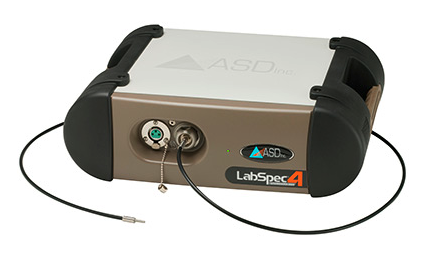Members Login

Channels
Special Offers & Promotions
Analytik Reports on the Use of the LabSpec Vis-NIR Portable Spectrometer to Study Historic Materials

Analytik, leading suppliers of innovative analytical instrumentation, report on how the LabSpec Vis-NIR portable spectrometer from PANalytical Boulder (formerly ASD Inc) is being used to study historic materials.
Analytik have supplied LabSpec Vis-NIR spectrometers in the world of heritage research where non-destructive identification of materials is vital both in terms of preservation and restoration. Systems are in use in museums, galleries, libraries and historic properties where applications include the dating of historic parchments and the analysis of pigments on manuscripts.
Dr Craig Kennedy is a senior lecturer in the School of the Built Environment at Heriot-Watt University where his research interests cover conservation of cultural heritage. This includes studying historic building materials, their decay and conservation, understanding mechanisms and pathways of deterioration and assessing novel methods of averting lasting damage. He also has an interest in biopolymers, understanding their molecular structure and how this provides mechanical strength and durability, and their decay pathways through the actions of time and external factors. While he uses many analytical techniques, he has been particularly impressed with the versatility of the LabSpec Vis-NIR spectrometer.
Dr Kennedy says “when dealing with buildings or artefacts of cultural heritage value, it is often not possible to carry out traditional scientific analyses as these require destructive sampling. NIR appealed as it was a non-destructive, spectroscopic technique, and the Analytik team provided the opportunity to use one of their systems. This proved quite persuasive as the system could be used on a range of historic materials. I work to understand the nature of historic materials and to map their degradation pathways. This allows for an educated decision making system regarding conservation works – for instance, if spectroscopy can provide a “best match” material for use in repairs, this instrument is ideal”.
Describing his previous experiences, Dr Kennedy continues: “I have used FTIR previously, as well as a range of other techniques such as X-ray fluorescence and X-ray diffraction. With the LabSpec, the real benefit of using this technique was its portability. When dealing with historic buildings or sites, and being unable to take samples away, you have to take science to the site. I have used the LabSpec in museums, on historic buildings and in one case in the middle of a field with no nearby power outlets. The software and resolution are lab-quality also, giving confidence in the results.”
Media Partners


